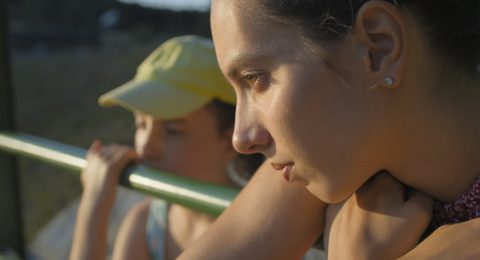Rosa has atypical autism. In early scenes, she lines up remote controls on the TV stand, smooths the strands of the living room rug and obsessively opens and closes drawers. When she doesn’t get her way, she bursts into startling fits of rage that can be difficult for her family to handle. Her parents are exhausted, constantly navigating how to care for their daughter with balancing their own busy lives.
But Marie-Magdalena Kochová’s promising debut feature isn’t about Rosa. It’s about her elder sister Johana. She’s The Other One (2024), playing in the Panorama: Central and Eastern Europe section.
This intimate documentary is about Glass Children, who are siblings of kids with complex needs that are often overlooked, unconsciously or not, by their parents. As a result of this status, they often feel like they can’t speak up about their own needs, resulting in a more withdrawn personality type. Kochová herself grew up alongside a sister with a disability, making this documentary, shot over Johana’s last year in school, a particularly personal project. Her touching film captures the contradictions of Johana’s life as she yearns to find her path, walking the delicate tightrope between caring for her younger sister and asserting her own personality.
There are touches of Sébastien Lifshitz’ work in the intense focus on youth, as well as the novelistic, coming-of-age narrative sweep, taking in teenage parties, university anxieties and the passing of the seasons. This is accompanied by smart framing choices, such as capturing Johana in her bedroom as her parents argue outside, seemingly forgotten, or fading out the audio to show her dissociating from discomforting moments.
The most important thing to convey is that Johana is a great sister. In lovely moments, she spends hours and hours playing with Rosa, indulging her every whim. But she has her own dreams and desires; going to university, dating, learning a profession. (To make matters worse, the film was made during the COVID-era). With parents working busy jobs and after-school care for Rosa lacking in their Czech hometown, Johana must put her interiority on hold. This makes her later development all that more satisfying to watch, keenly capturing the complexity of growing out of someone else’s shadow.
This is still an underexplored topic in mental health studies, making The Other One, which claims to be the first film on this topic (although the phenomenon has blown up TikTok), an essential conversation starter.
A fun additional note: Keen purveyors of Eastern Bloc animation will notice a significant cameo by Krtek, a little mole character who, like Paddington in the U.K. or Cheburashka in Russia, is basically the Czech Republic’s national mascot. Rosa is extremely attached to Krtek, constantly playing with a plushie version of the adorable mole, culminating in him taking the angel’s role at the top of the family Christmas tree. Perhaps this point is only worthwhile to Krtek completionists, but it felt like something I should let you all know about.
Redmond is the editor-in-chief of Journey Into Cinema.

